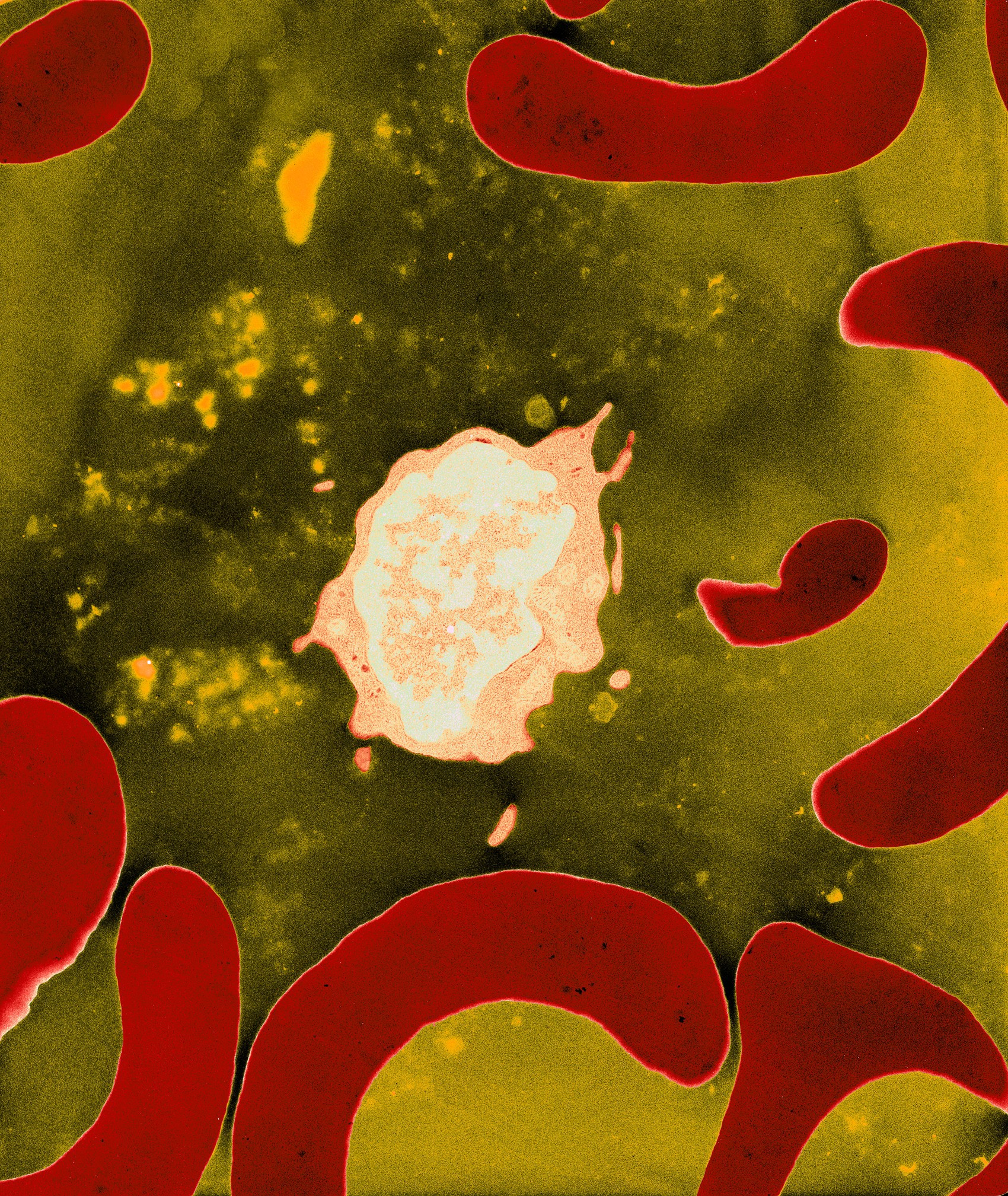White Blood Cell Count in Malaria Study Group
White Blood Cell Count in Malaria Study Group
Determining what affects White Blood Cell (WBC) count at baseline and during acute phase of malaria infection.

The study group was formed in November 2018. Studies meeting essential inclusion criteria were identified from two existing study groups: the Falciparum Haematology Study Group [1] and the Vivax Haematology Study Group [2]. Data gathering and curation has been completed. Data analysis is underway, we expect to complete analysis and submit a manuscript for publication in 2020.
The research has now been published: Variability in white blood cell count during uncomplicated malaria and implications for parasite density estimation: a WorldWide Antimalarial Resistance Network individual patient data meta-analysis
Leucopenia is a common manifestation of acute malaria infection [3–7]. It is mainly mediated by a lymphopenia [3,8], believed to result from the redistribution of lymphocytes to marginal pools such as the spleen. Leucocytosis can also occur, and is associated with concurrent bacterial infection [9] and severe malaria [3]. Understanding variation in WBC count during malaria infection is critical when estimating parasite density from a thick blood film, which involves counting the number of asexual parasites against a standardised number of WBCs. When direct measurement is not possible, the WBC count is often assumed to be 8,000 cells/microL. However, this value is unlikely to reflect the variation in WBC count in different patient populations and during acute infection. As such, describing observed WBC counts at baseline and throughout the course of recovery is crucial to ensuring the accuracy of quantification of parasite biomass, including the detection of hyperparasitaemic patients and estimation of parasite clearance. In addition, the factors contributing to the total and differential WBC count are largely unknown. Characterisation of the determinants of WBC count during acute malaria and the association of WBC count with clinical outcomes may aid early identification of patients at risk of poor clinical outcomes.
Primary research question
- What are the determinants of WBC count at baseline and during acute phase of infection?
Secondary research questions
- How does variation in WBC count affect the quantification of peripheral parasitaemia and estimates of parasite clearance.
- When WBC is not measured, what is the most appropriate WBC value to use for estimating parasitaemia?
- Is baseline WBC predictive of consequent clinical outcomes, including fever clearance, parasite clearance and recrudescence?
- Individual patient data from antimalarial efficacy trials of patients with uncomplicated malaria
- WBC count at baseline
- Patient demographics (age, gender, admission date)
- Baseline parasitaemia
- Differential white cell count
- Baseline +/- serial temperature measurements
- Parasitaemia and temperature after Day 0 (ideally matched to the day[s] that WBC count was recorded)
- Other baseline factors, including platelet count, haemoglobin or haematocrit, weight, presence of splenomegaly
- Study site characteristics: GPS coordinates, transmission intensity estimates
Studies meeting essential inclusion criteria will be identified from two existing study groups: the Falciparum Haematology Study Group [1] and the Vivax Haematology Study Group [2]. Authors of original studies will be invited to share data for this analysis, contribute to the analysis and authorship of the project.
All the data sets have already been uploaded in the WWARN Data Repository (as they have contributed to the previous study groups), standardized and pooled into a single database of quality-assured individual patient data according to the WWARN Clinical Data Management and Statistical Plan [10].
Random effects models will be used to estimate WBC in different populations and examine its determinants. A simulation study will be conducted to assess the impact of using a fixed value for WBC count on parasitaemia estimation, the proportion of patients classified as being hyperparasitaemic, and on the estimation of parasite clearance half-life. The temporal analysis will include plotting WBC over time, by species, age groups, transmission levels, treatment outcome. Association between WBC count at baseline and clinical outcomes will be explored through random effect models including WBC count at baseline, demographics and clinical covariates.
A detailed statistical analysis plan will be developed prior to commencing the analysis and will be shared with all contributors.
The Study Group comprises participating investigators who contribute relevant data sets to the pooled analysis. Data included in the WBC Count in Malaria Study Group remain the property of the investigator. The Study Group makes decisions regarding the meta-analysis and plans for publication in line with the WWARN Publication Policy [11]. The WWARN management structure of this Study Group consists of group leader (Kasia Stepniewska) and Kalynn Kennon (data manager). An additional WWARN advisory committee consists of Philippe Guerin, Ric Price and Rob Commons. Additional contributors will be listed as the Study Group develops.
For further information, email Kasia Stepniewska: kasia.stepniewska@wwarn.org.
1. Haematology Study Group | Worldwide Antimalarial Resistance Network.
2. Vivax Haematology Study Group | Worldwide Antimalarial Resistance Network.
3. Tobón-Castaño, A., Mesa-Echeverry, E. & Miranda-Arboleda, A. F. Leukogram Profile and Clinical Status in vivax and falciparum Malaria Patients from Colombia. J. Trop. Med. 2015, 796182 (2015).
4. Kimbi, H. K. et al. Malaria and haematologic parameters of pupils at different altitudes along the slope of Mount Cameroon: a cross-sectional study. Malar. J. 12, 193 (2013).
5. Eriksson, B., Hellgren, U. & Rombo, L. Changes in erythrocyte sedimentation rate, C-reactive protein and hematological parameters in patients with acute malaria. Scand. J. Infect. Dis. 21, 434–441 (1989).
6. Erhart, L. M. et al. Hematologic and clinical indices of malaria in a semi-immune population of western Thailand. Am. J. Trop. Med. Hyg. 70, 8–14 (2004).
7. Maghendji-Nzondo, S. et al. Prevalence of malaria, prevention measures, and main clinical features in febrile children admitted to the Franceville Regional Hospital, Gabon. Parasite Paris Fr. 23, 32 (2016).
8. Tangpukdee, N. et al. Dynamic changes in white blood cell counts in uncomplicated Plasmodium falciparum and P. vivax malaria. Parasitol. Int. 57, 490–494 (2008).
9. McKenzie, F. E. et al. White blood cell counts and malaria. J. Infect. Dis. 192, 323–330 (2005).
10. Clinical Data Management and Analysis Plan | Worldwide Antimalarial Resistance Network.



